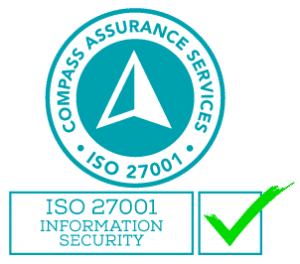In the ever-evolving digital landscape, mastering patch management has become a crucial aspect of maintaining a secure and robust system. As cyber threats continue to rise, leaving your system vulnerable is no longer an option. A recent study by Ponemon Institute found that 60% of breach victims said they were breached due to an unpatched known vulnerability.
This comprehensive guide to patch management is designed to equip you with the knowledge and tools necessary to stay one step ahead of potential attacks, while ensuring seamless functionality and productivity. With an emphasis on best practices and a strategic approach, this guide serves as a vital resource for organisations and individuals alike, striving to keep their systems and data secure.
Delve into the world of patch management and discover how you can fortify your system’s defences, optimise performance, and safeguard your digital assets with confidence and ease.
What is patch management?
In essence, patch management is a crucial aspect of an organisation’s overall security strategy. It helps maintain the integrity, performance, and stability of a system by addressing security flaws, fixing bugs, and providing enhancements. This process is particularly important for organisations with multiple devices connected to their network, as it ensures that all devices are running on the latest and most secure versions of software.
The patch management process typically involves several steps, including identifying vulnerabilities, assessing the risks associated with those vulnerabilities, acquiring and testing patches, deploying the patches, and monitoring the effectiveness of the patches.
Why is patch management important?
First and foremost, patch management is crucial for maintaining system security. Cyber threats are constantly evolving, and software vulnerabilities can be exploited by malicious actors to gain unauthorised access to sensitive data. Mandiant reports 27% of disclosed vulnerabilities are exploited less than a month after the release of a patch. Patching these vulnerabilities is the primary means of preventing security breaches and protecting valuable digital assets.
It is also essential for maintaining compliance with industry standards and regulations. Many industries, such as healthcare and finance, have strict requirements for software and system security. Failing to adhere to these standards can result in severe financial penalties, reputational damage, and even legal consequences.
Updates and patches can contain performance optimisations and bug fixes that improve the overall functionality of software applications and operating systems. By regularly applying these updates, organisations can optimise their systems, prevent downtime, and ensure that their users enjoy a seamless and productive experience.
The dangers of inefficient patch management
An ineffective or inefficient patch management process can leave organisations vulnerable to security breaches, compliance issues, and operational inefficiencies. It’s essential to recognise the consequences of poor patch management and address any shortcomings in your organisation’s current strategy.
One of the most significant risks is the increased vulnerability to cyber-attacks. HIPAA reported that unpatched vulnerabilities are the primary attack vector for ransomware actors. When systems are not updated promptly, they can be left exposed to known security vulnerabilities, making it easier for attackers to gain unauthorised access and exploit sensitive data. This can result in data breaches, ransomware attacks, and other costly security incidents.
How is patch management different from vulnerability management?
While patch management and vulnerability management are related, they are not the same thing. Vulnerability management is the process of identifying, assessing, and addressing weaknesses in a system or network. This process involves scanning systems for vulnerabilities, prioritising those vulnerabilities based on the level of risk they pose, and implementing the appropriate measures to mitigate those risks.
Patch management, on the other hand, specifically focuses on the acquisition, testing, deployment, and verification of patches and updates for operating systems, software apps, and other critical system components.
Both processes are essential for maintaining a secure and robust system, and organisations should develop a comprehensive security strategy that integrates both patch management and vulnerability management activities.
Patch management tools and services
There are a wide range of patch management tools and services available, each with its own features and capabilities. Some of the key types of patch management tools and services include:
Patch management software: These solutions are designed to help organisations automate and streamline the patch management process. They typically provide features such as vulnerability scanning, patch acquisition, patch testing, deployment, and reporting. Examples of popular patch management software include ManageEngine Patch Manager Plus, SolarWinds Patch Manager, and Ivanti Patch for Endpoint Manager.
Operating system update services: Operating system vendors often provide built-in update services that allow organisations to manage patches for their operating systems. These include Microsoft’s Windows Server Update Services (WSUS) for managing updates in Windows environments, and Red Hat Satellite for managing updates in Red Hat Enterprise Linux environments.
Cloud-based patch management services: These services offer a remote and scalable solution for managing patches across an organisation’s devices. They typically include features such as automated patch deployment, patch scheduling, and real-time reporting. Examples of cloud-based patch management services include Automox, Cloud Management Suite, and Panorama9.
When choosing patch management services or software, organisations should consider factors such as the size of their network, the complexity of their environment, the level of automation required, and the types of systems and devices that need to be patched. It’s essential to select a solution that meets the organisation’s unique needs and provides the necessary functionality to maintain a secure and up-to-date system.
Patch management best practices
Develop a patch management policy: Establish a formal policy that outlines the roles and responsibilities of various stakeholders, the patch management process, and the desired outcomes. The policy should be regularly reviewed and updated to reflect changes in the organisation’s environment and security landscape.
Prioritise patches based on risk and impact: Not all patches are equal in terms of their importance and potential impact on an organisation’s security and operations. Prioritise patches based on factors such as the severity of the vulnerability, the potential impact on the system, and the likelihood of exploitation to ensure that the most critical patches are applied first, reducing the risk of security breaches and operational issues.
Test patches before deployment: It’s crucial to test patches in a controlled environment before deploying them across the organisation’s systems. This helps to identify any potential issues or conflicts that may arise, and allows organisations to address these issues before they impact the wider network.
Schedule regular patching cycles: Establish a regular patching schedule to ensure that patches are applied in a timely manner. This can help to minimise the window of vulnerability and reduce the risk of security breaches. The frequency of patching cycles may vary depending on the organisation’s environment and requirements, but it’s essential to maintain a consistent and predictable schedule.
Monitor and report on patch status: Effective patch management requires visibility into the patch status of systems across the organisation. Businesses should regularly monitor and report on the status of patches, including the number of devices that are up-to-date, the number of devices with missing patches, and the status of critical patches. This information can help identify areas of concern, and take appropriate action to address any vulnerabilities.
Educate users and stakeholders: Patch management is a shared responsibility, and it’s essential to ensure that all users and stakeholders are aware of their roles in maintaining a secure and up-to-date system.
Overcoming common patch management challenges
Patch management can present several challenges for organisations, including resource constraints, compatibility issues, and user resistance.
Leverage automation: Automating patch management tasks can help organisations more efficiently manage their patching processes, reduce the burden on IT staff, and minimise the risk of human error. Consider implementing patch management software or services that offer automation capabilities, such as automated patch acquisition, deployment, and reporting.
Establish a patch testing process: As mentioned earlier, testing patches before deployment is a critical best practice for minimising compatibility issues and ensuring the smooth operation of systems. Establish a formal patch testing process that includes the use of representative systems and devices, as well as a thorough evaluation of the potential impact of the patch on the organisation’s environment.
Communicate the importance: Overcoming user resistance to patch management requires clear communication of the importance of maintaining a secure and up-to-date system. Regularly reinforce the message that patch management is a shared responsibility, and that all users have a role to play in supporting the process. This can help to create a culture of security awareness and encourage user buy-in for patch management initiatives.
Develop your patch management strategy and policy with guidance from the experts
Patch management is an essential aspect of maintaining a secure and robust system in today’s digital landscape. With a strategic approach and the right tools and services, mastering patch management is within reach for organisations of all sizes and industries.
The cyber security specialists at Steadfast Solutions can fully audit your IT environment, make recommendations on policy guidelines and management tools, and help you develop a comprehensive strategy to ensure your business maintains a secure and robust system.




